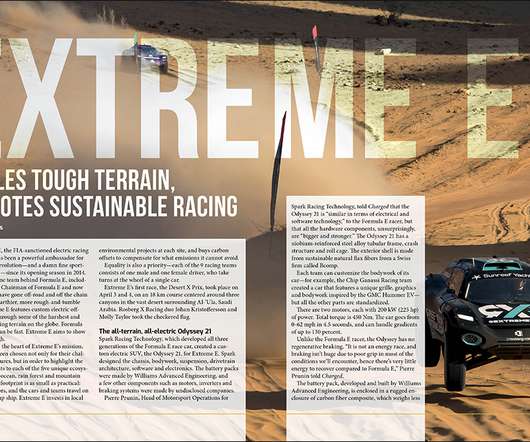MHI to supply 2 electric buses featuring MLIX Li-ion batteries for Kitakyushu City
Green Car Congress
FEBRUARY 17, 2014
In combination with a lighter body enabled by the partial adoption of carbon fiber construction, the new buses will be able to operate continuously over increased distances—up to 80 kilometers (50 miles) on a full charge, at a top speed of 85 km/h (53 mph). Load capacity is 72 passengers.














Let's personalize your content